It breaks up into three simple sections that are each relatively easy to explain:

simulate this circuit – Schematic created using CircuitLab
The first part is the diode that provides reverse voltage protection. If for some reason the polarity of the input voltage is wired opposite to what it is supposed to be, then \$D_1\$ will block it and the output will also be essentially off. Only if the polarity is correct, with the rest of the circuit be operational. The price of including this added protection is a voltage drop of perhaps \$700\:\text{mV}\$. (I exaggerated this voltage drop a little in the diagram. But it gets the point across.)
The next section is below that. It's a zener regulator. The resistor is there to limit the current. The zener tends to have the same voltage across it, when reverse-biased with sufficient voltage (and \$11-13\:\text{V}\$ is more than sufficient.) With \$R_1\$ as given, you'd expect the current to be somewhere from about \$5\:\text{mA}\$ to \$10\:\text{mA}\$. This is a "normal" operating current for many zeners. (You could go look up the datasheet and find out, exactly. I didn't bother here.) So the voltage at the top of the zener should be close to \$9.1\:\text{V}\$. The exact current through the zener will have a slight impact on this. But not much. (The capacitor, \$C_1\$, is there to "average out" or "smooth out" the zener noise. It's not critical. But it is helpful.)
The final section on the right is there to "boost up" the current compliance. Since the zener only has a few milliamps to work with, if you didn't include this added section your load could only draw a very small few milliamps, at most, without messing up the zener's regulated voltage. So to get more than that, you need a current boosting section. This is composed of what is often called an "emitter follower" BJT. This BJT's emitter will "follow" the voltage at the base. Since the base is at \$9.1\:\text{V}\$, and since the base-emitter voltage drop will be about \$600-700\:\text{mV}\$, you can expect the emitter to "follow," but here with a slightly lower voltage (as indicated in the schematic.) This BJT doesn't require much base current in order to allow a lot of collector current. So the BJT here may "draw" current from its collector, by also drawing a much smaller, tiny base current ("stolen" from the zener, so it can't be allowed to be very much), and then this sum of the two becomes the total emitter current. This emitter current can be as much as several hundred times the base current. So here, the BJT might draw \$1\:\text{mA}\$ of base current (which is okay, because there is several times that much available due to \$R_1\$) in order to handle perhaps as much as \$200\:\text{mA}\$ of emitter current. In keeping with the idea of "being conservative" the specification only says \$100\:\text{mA}\$ -- and that's very much the right way to go when telling someone what this is capable of. Be conservative.
\$R_2\$ is there as a bit of a short-circuit current limit. It doesn't serve much else. But if the load tries to pull too much current via the emitter then there will be an increasingly larger voltage drop across \$R_2\$ and this will cause the collector to have access to lower remaining voltage. At some point, the emitter will be "cramped." In this case, a drop of more than \$2\:\text{V}\$ (perhaps a little more) will probably begin the process of cramping the output. This means the limit is somewhere above \$\frac{2\:\text{V}}{22\:\Omega}\approx 100\:\text{mA}\$. Overall, \$R_2\$ is a very cheap way to add some modest protection to help make the whole thing just a little more bullet-proof, so to speak.
Note: \$C_2\$ is an output capacitor providing some added current compliance if there's a momentary, short-term demand by the load. I'd also normally want to include an output resistor across \$C_2\$ (not shown) of perhaps \$4.7\:\text{k}\Omega\$ as a bleed resistor to provide a DC path to ground from the output and to discharge \$C_2\$ after a few seconds, when the input source of power is removed.

